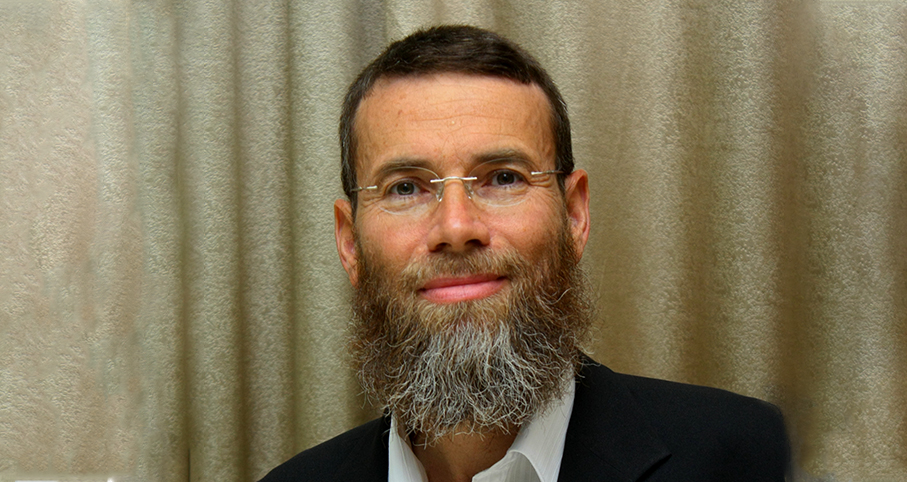Beit Midrash
- Jewish Laws and Thoughts
- Prayer
- Shul
"May we merge together two existent shullen, when each has its own minhagim?"
Question #2: Two shuls
"Is it permitted to leave a shul to start our own?’
Question #3: Old shul
"In our town, almost everyone has moved away from the ‘old neighborhood,’ which has now, unfortunately, become a slum. The sprinkling of Jewish people still there can no longer maintain the shul. Are the people who used to live there still obligated to maintain the old shul building?"
Question #4: New shul
"We have been comfortably davening in different people’s houses, three times a day, seven days a week. Now, some individuals are clamoring that they want us to build a shul, which is a huge expense. Isn’t this chutzpah on their part, when we are all struggling to pay our mortgages?"
Introduction:
Our batei kenesiyos and batei midrashos, the buildings that we designate for prayer and for study, are referred to as our mikdash me’at, our holy buildings reminiscent of the the sanctity of the Mishkan and the Beis Hamikdash.
There is a halachic requirement to build a shul. To quote the Rambam (Hilchos Tefillah 11:1-2), Any place that has ten Jews must have available a building that they can enter to pray at every time of prayer. This building is called a beis hakenesses (synagogue). The members of the community can force one another to build a synagogue, to purchase a sefer Torah and books of the prophets and of the kesuvim. When you build a synagogue, you must build it in the highest part of the town… and you must elevate it, until it is taller than any of the courtyards in town.
We see from the words of the Rambam that it is not sufficient to have an area available in which one can daven when necessary – it is required to have a building designated specifically for this purpose, even if the shul will be empty the rest of the day (Shu"t Igros Moshe, Orach Chayim, 2:44). Rav Moshe Feinstein explains that a community is required to have a building designated to be their mikdash me’at.
Since it is a community responsibility to have a shul building, the minority of the membership of a community may force the majority to raise the money to build a shul (Rema, Choshen Mishpat 163:1). In earlier generations, communities had the authority to levy taxes on their members. Since building a shul is a community responsibility, they could require people to provide the funds necessary for this project.
Must we build a shul?
At this point, let us address one of our opening questions: "We have been comfortably davening in different people’s houses, three times a day, seven days a week. Now, some individuals are clamoring that they want us to build a shul, which is a huge expense. Isn’t this chutzpah on their part, when we are all struggling to pay our mortgages?"
The answer is that, not only is it not chutzpah on the part of those individuals, the halachic right is on their side. The community is required to have a shul, and it is unsatisfactory that the minyan takes place in a home that is not meant to be a beis tefillah. Therefore, individuals can certainly force the rest to build a shul.
I cannot resist telling over the following story from my experience as a shul rav. At one time, I was invited for an interview to a new shul that was located in an affluent area. I made a trip to meet the shul search committee, which was very interested in engaging me as their rav. They showed me the converted house that they were using as the shul, and mentioned that when they had renovated the building, they did so in a way that there would be an apartment in the building for the rav to use as his residence, since they did not have much money for a respectable salary. In their minds, since the rav could now save himself mortgage or rent money, that was a hefty part of what they intended for his salary.
I noted to them that in the position I had at the time, I could devote myself fully to rabbinic duties, something that would be quite impossible in the circumstances that they proposed. Their response was that although they understood my predicament, this was all they could afford, since most of their members were paying very huge mortgages for the zechus of living in this neighborhood. I made a mental note that none of them seemed to feel that the apartment part of the shul building that they were proposing was certainly nothing that any of them would consider suitable residential accommodations, nor would they consider the shul building representative of the high-class lifestyle that they had chosen for themselves.
How do we assess?
In earlier generations, the Jewish community had the ability to levy taxes and other fees on its membership. Virtually all Jewish communities had fairly strong authority over its membership because the community levied taxes and also was responsible for collectively paying taxes to the local monarch.
When assessing individuals for the construction of a local shul, do we charge according to people’s financial means, or does everyone share equally in the costs of the building?
The Rema rules that when raising the money for a shul, we take into consideration both the resources of the individuals and also who will be using the facility. Therefore, when assessing people for the building of a shul, the costs are allocated both according to the financial means and according to individuals. Thus, the wealthier members of a community will be paying a somewhat higher percentage of the costs.
Rent a shul
If the community does not have the resources to build or purchase a shul, they can force one another to put up enough money to rent a place (Mishnah Berurah 150:2)
Where not to rent
In a responsum in Igros Moshe (Shu"t Igros Moshe, Orach Chayim 3:25), Rav Moshe Feinstein was asked the following: There is no orthodox shul in town, and they have been davening in houses. Now, they want to rent space from a local conservative congregation. May they do so?
Rav Moshe prohibits this for two reasons:
1. This arrangement provides some credibility to the conservative congregation.
2. When people see the orthodox people entering or exiting the building of the conservative temple, they may think that these people are intending to pray in the conservative facility, which is prohibited. This involves the prohibition of maris ayin, doing something that may raise suspicion that one violated halacha.
Changing neighborhoods
Let us now address a different one of our opening questions: "In our town, almost everyone has moved away from the ‘old neighborhood,’ which has now, unfortunately, become a slum. The sprinkling of Jewish people still there can no longer maintain the shul. Are the people who used to live there still obligated to maintain the old shul building?"
This question was asked of Rav Moshe Feinstein (Shu"t Igros Moshe, Orach Chayim 3:28).
In the case that he was asked, the shul had already opened a new facility in a nicer area and, until this point, the expenses of the old shul were being covered from the budget of the new shul. However, the members no longer saw any gain from doing so, since it was only a question of time until the old shul would no longer be at all functional. They would like to close down the old shul and sell the building. Are they permitted to?
The general rule is that a shul is considered communal public property and, as long as it functions as a shul, no one has the right to sell or modify its use. This is because the "owners" of the shul include anyone who might visit the area and want to find a minyan in which to daven. This is true, providing that there are still minyanim that meet in the shul on a regular basis -- they cannot sell the building or close it down (Shu"t Igros Moshe, Orach Chayim III #29).
In the case at hand, Rav Moshe rules that those who have moved out of the neighborhood of the old shul have no responsibility to pay for the upkeep or repairs of the shul building that they are not using. The fact that the community has been treating the two shul buildings as one institution does not change this. Rav Moshe then mentions that, since the old shul is in a bad neighborhood, they may have a responsibility to remove the sifrei Torah from the shul, and perhaps even the siddurim, chumashim and other seforim, in order to protect them. He concludes that, since those who still daven in the old shul have no means of their own to keep the shul going, it is permitted to shutter the shul building and sell it. He also mentions that, if the bank will foreclose on the mortgage and re-possess the building, this does not require them to continue paying the mortgage. Nor does the bank’s decision as to what it will do with the shul property after the foreclosure require them to continue paying the mortgage.
Regarding those who still live in the old neighborhood, Rav Moshe rules that they should conduct the minyanim in a house where the sifrei Torah and the other seforim will be secure (Shu"t Igros Moshe, Orach Chayim III #28).
An interesting teshuvah from Rav Moshe relates to a shul building that had been originally planned to have a lower level to use as a social hall, with the shul intended to be on the upper floor. They began to use the social hall for davening until they built the shul on top, but the neighborhood began to change, and it became clear that they would have no need to complete the structure of the building. They never finished the building, and instead, directed the efforts and finances toward purchasing a new shul in a neighborhood to which people were moving. The old shul, or, more accurately, the "social hall" part of the old shul building, is at the stage where there is barely a minyan left, and the dwindling numbers imply that it is not going to be very long until there is no functioning minyan. The question is that they would like to sell the old building and use the money to complete the purchase of the new building. Furthermore, the mikveh in the town is now in a neighborhood to which women are hesitant to travel, so they want to use the funds from the old shul building to defray the construction costs of a necessary new mikveh.
Because of the specific circumstances involved, including that it is unlikely that people from the outside will drop in to daven in this minyan anymore, Rav Moshe rules that they are permitted to sell the building.
A similar responsum from Rav Moshe was when they needed to create a shul in a neighborhood where there was a good chance that the Jewish community there would not last long. Rather than declare their building a shul, they called it a library and used it as their shul. Rav Moshe suggests that this was a good suggestion, since they knew from the outset that the days of the Jewish community were numbered (=Shu"t Igros Moshe, Orach Chayim, 2:44).
We will continue this article next week…
This Shiur is published also at Rabbi Kaganof's site

Where Should I Pray?
Rabbi Yirmiyohu Kaganoff | Tamuz 15 5778

Kedushat Beit Knesset of a Rented Building
Rabbi Daniel Mann | Tevet 3 5780

Shul Shaylos - The Rulings of the Gadol of Brownsville
Rabbi Yirmiyohu Kaganoff | Tammuz 11 5777






















